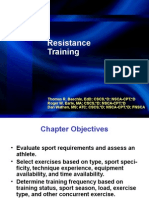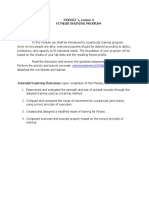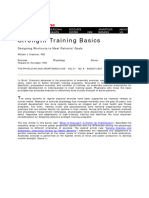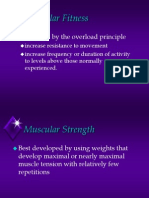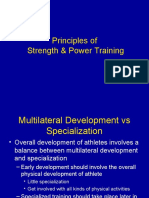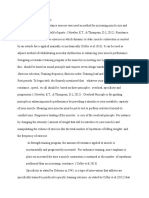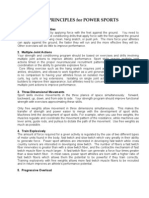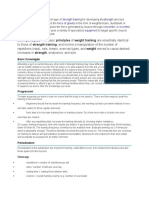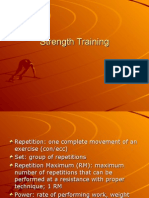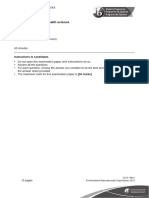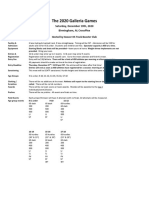0% found this document useful (0 votes)
23 views19 pagesResistance Training Program Design Components
The document outlines the principles of strength training program design, emphasizing seven key variables: needs analysis, exercise selection, training frequency, exercise order, training load and repetitions, volume, and rest periods. It details the importance of evaluating both the sport and the athlete to tailor an effective resistance training program, including specific exercises and training loads based on the athlete's goals. Additionally, it discusses the significance of proper exercise order, volume, and rest periods to optimize performance and recovery.
Uploaded by
saskia.brandt12Copyright
© © All Rights Reserved
We take content rights seriously. If you suspect this is your content, claim it here.
Available Formats
Download as DOCX, PDF, TXT or read online on Scribd
0% found this document useful (0 votes)
23 views19 pagesResistance Training Program Design Components
The document outlines the principles of strength training program design, emphasizing seven key variables: needs analysis, exercise selection, training frequency, exercise order, training load and repetitions, volume, and rest periods. It details the importance of evaluating both the sport and the athlete to tailor an effective resistance training program, including specific exercises and training loads based on the athlete's goals. Additionally, it discusses the significance of proper exercise order, volume, and rest periods to optimize performance and recovery.
Uploaded by
saskia.brandt12Copyright
© © All Rights Reserved
We take content rights seriously. If you suspect this is your content, claim it here.
Available Formats
Download as DOCX, PDF, TXT or read online on Scribd
/ 19


